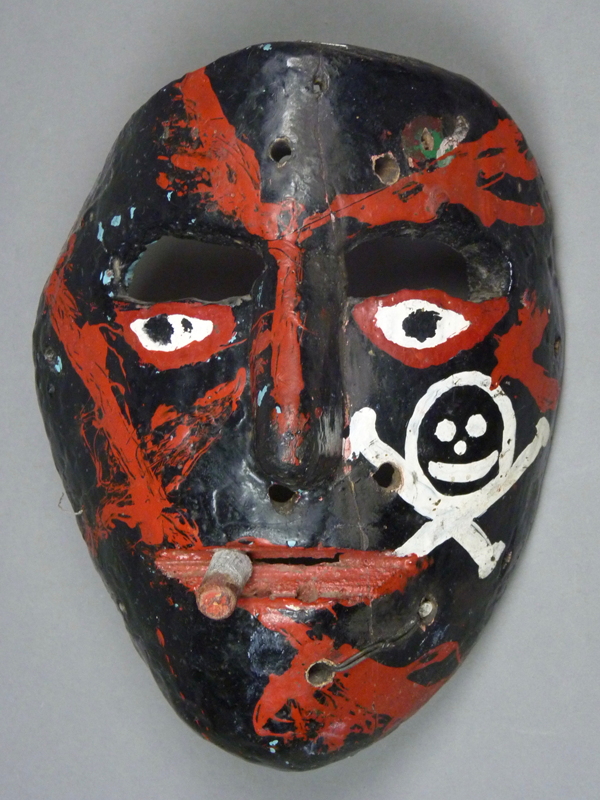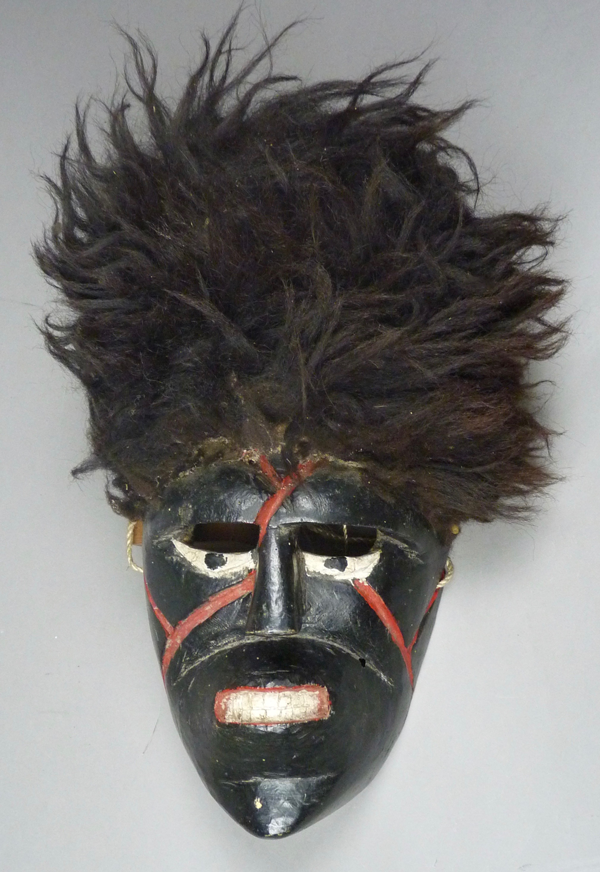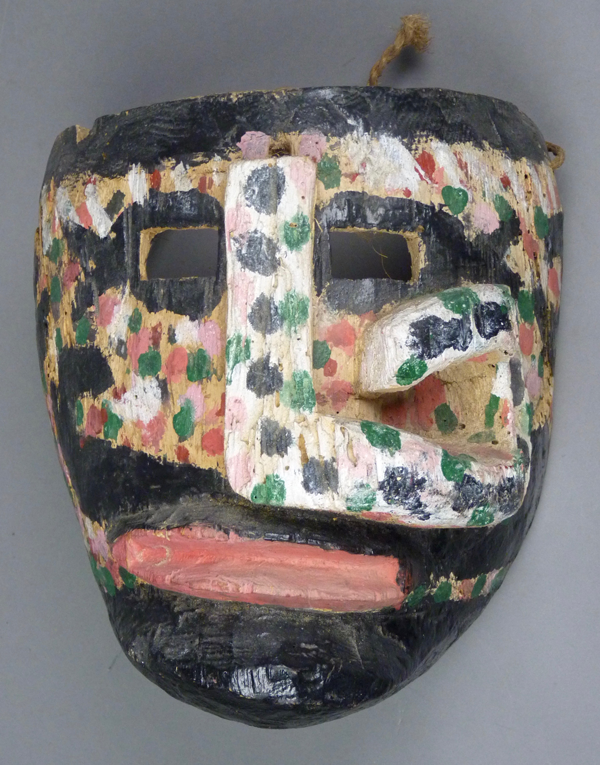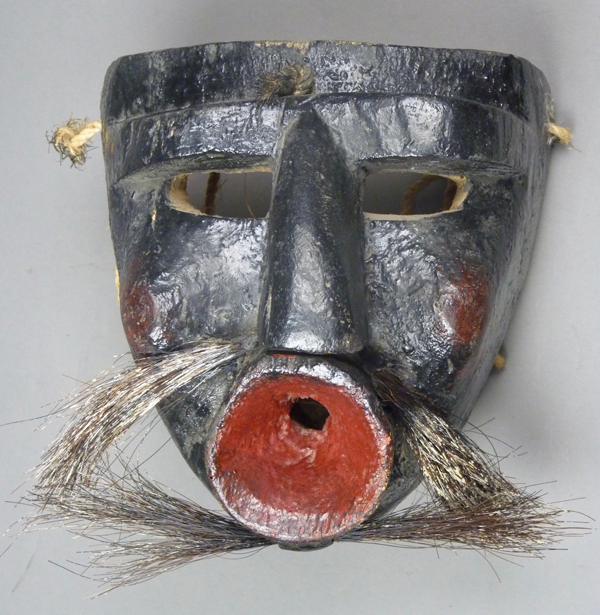In the area of Guerrero that lies along the Pacific coast we find the Danza de los Pescadores (fisherman). Today I will show five Pescador masks from my collection.
The first of these illustrates some common features of these masks. They are usually painted black, and their faces have what appear to be bloody wounds. There is usually a cigarette hanging from one corner of the mouth. I bought this mask from Jaled Muyaes and Estela Ogazón in 1998. My mask collector friend John Levin observes that most Pescador masks have painted rather than carved wounds.
Pescador masks don’t commonly bear an image of a skull and crossbones. In this case that design was painted before some of the bloodstains, so it may be an original feature. Then again, there seem to be earlier layers of paint under the surface layer, betrayed by flashes of turquoise or green.





